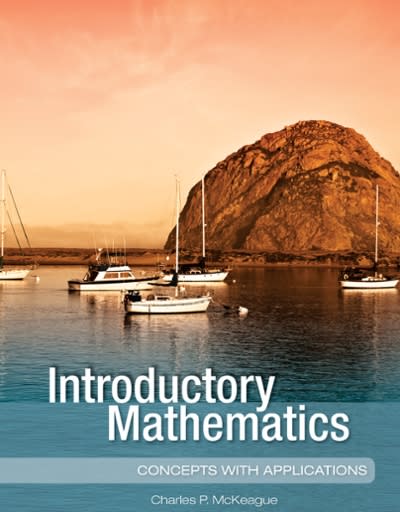Question
Midterm Exam ANA 500 Use gretl and the 2008 National Election Study to answer the questions below. Upload a Word or PDF document that contains
Midterm Exam
ANA 500
Use gretl and the 2008 National Election Study to answer the questions below.
Upload a Word or PDF document that contains your answers.
Upload your gretl script file in addition to your Word or PDF document.
1. How many observations are in this dataset?
Ans- 2323
2. How many variables are in this dataset?
Ans- 65
3. What are the elements/entities in this dataset?
Ans- Voters/ cititizens
4. What type of variable is "age"? What type of variable is "region? What type of variable is "hh_adults"?
Ans- "age" is numerical discrete, "region" is categorical nominal, "hh_adults" is numerical discrete variable.
5. Calculate descriptive statistics for the variables: age, education, obama_therm, and mccain_therm.
a) For which candidate is the sample mean of the feeling thermometer higher? For which candidate is the median of the feeling thermometer higher?
b) Provide an estimated density plot for the age variable. Is this variable skewed? If yes, in what direction?
c) Calculate the correlation coefficient between age and the Obama feeling thermometer. Does the correlation appear strong or weak?
d) Calculate the correlation coefficient between age and the McCain feeling thermometer. Does the correlation appear strong or weak?
6. The variable "union" equals 1 when someone in the household belongs to a union, and it equals 5 if no one in the household belongs to a union. The variable "hlth_insured" equals 1 if the respondent has health insurance, and it equals 5 if they do not.
a) Create a new variable named hh_union_member that equals 0 if no one in the household belongs to a union and equals 1 if someone in the household does belong to a union.
b) Create a new variable named health_insurance that equals 0 if the respondent does not have health insurance and equals 1 if the respondent has health insurance.
c) What proportion of respondents live in households with a union member?
d) What proportion of respondents have health insurance?
e) Produce graphs of the frequency distributions for the two variables you created. Which variable is more evenly distributed?
f) Produce a cross-tabulation for the two variables you created. What percentage of respondents with health insurance live in a household with a union member?
g) Produce a graph of the frequency distribution for the union variable, but only for those respondents who have health insurance.
7. Confidence intervals
a) Estimate 95% confidence intervals for the variables age and education.
b) Now, estimate 99% confidence intervals for the variables age and education. Which confidence interval is wider? Why?
c) Estimate 95% confidence intervals for the variables hh_union_member and health_insurance.
8. Calculate descriptive statistics for the variables age and education by health_insurance status (i.e. calculate separate descriptive statistics for those respondents with health insurance and those respondents without health insurance).
9. The variable pol_ideology describes the political ideology of the respondent.
a) What is the average age for each of the political ideology categories?
b) What is the average years of education for each of the political ideology categories?
10. Hypothesis tests (use a 5% level of significance for all tests)
a) Test the hypothesis that the mean age of respondents is different from 48.
b) Test the hypothesis that the mean age of respondents is greater than 48.
c) Test the hypothesis that the proportion of households with a union member is less than 0.15.
d) Test the hypothesis that the proportion of respondents with health insurance is greater than 0.85.
e) Test the hypothesis that the variables hh_union_member and health_insurance are related (i.e. not independent).
f) Test the hypothesis that the mean age is different between respondents with health insurance and respondents without health insurance.
g) Test the hypothesis that the mean years of education is different between respondents with health insurance and without health insurance.
h) Test the hypothesis that mean age differs across the political ideology categories.
i) Test the hypothesis that the mean years of education differs across the political ideology categories.
j) Test the hypothesis that the mean age differs across region of residence.
k) Test the hypothesis that the mean years of education differs across region of residence.
Step by Step Solution
There are 3 Steps involved in it
Step: 1

Get Instant Access to Expert-Tailored Solutions
See step-by-step solutions with expert insights and AI powered tools for academic success
Step: 2

Step: 3

Ace Your Homework with AI
Get the answers you need in no time with our AI-driven, step-by-step assistance
Get Started


